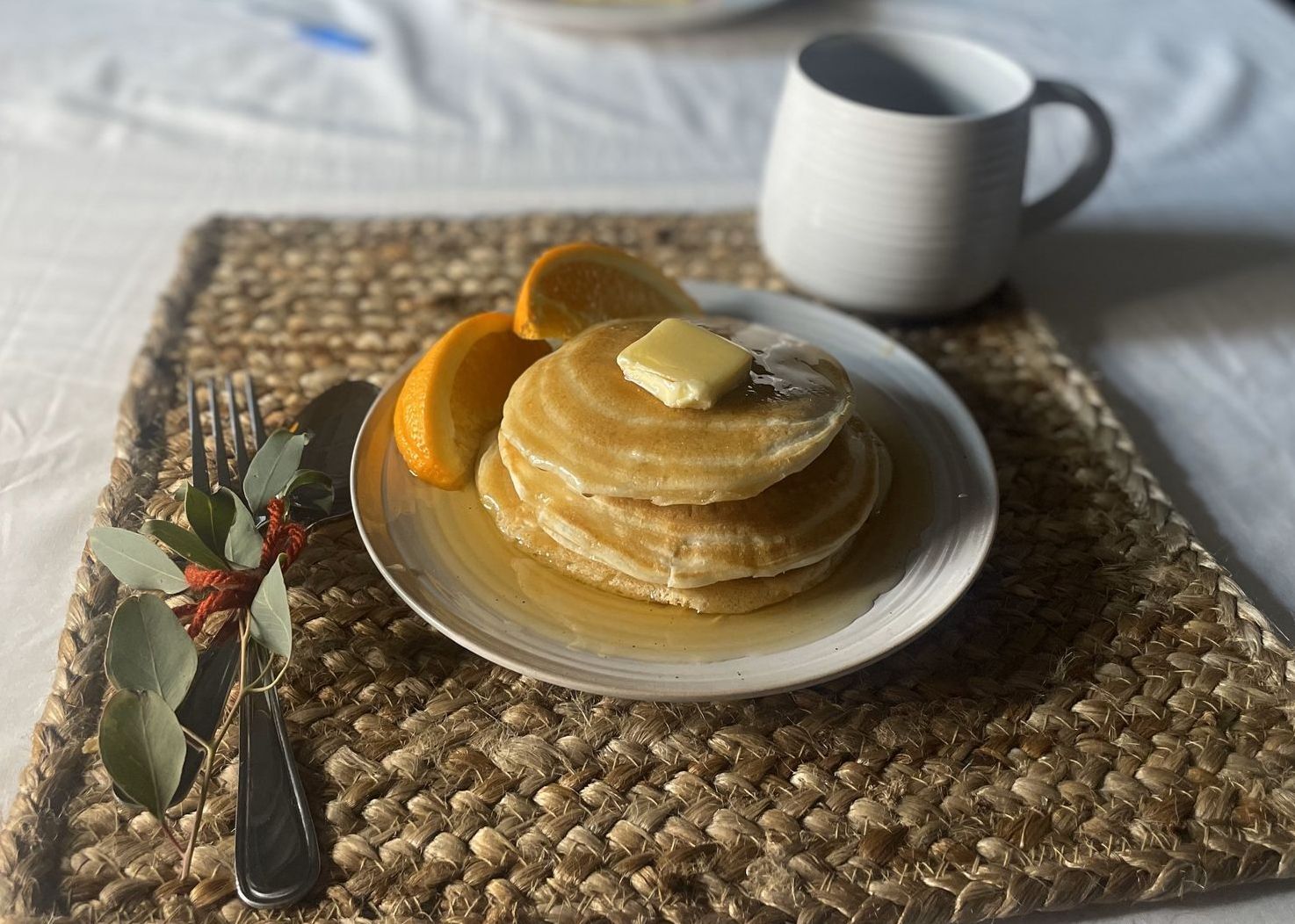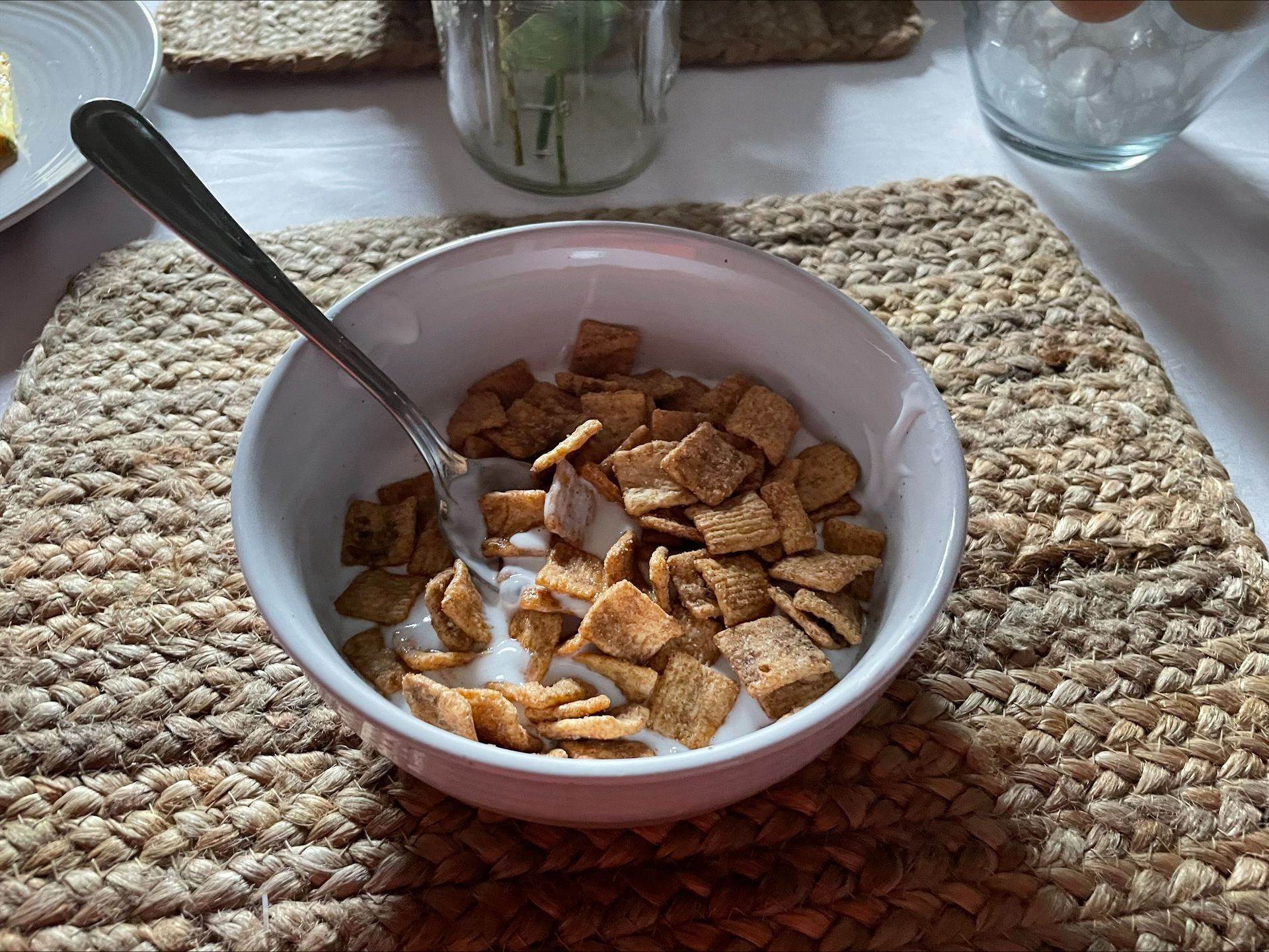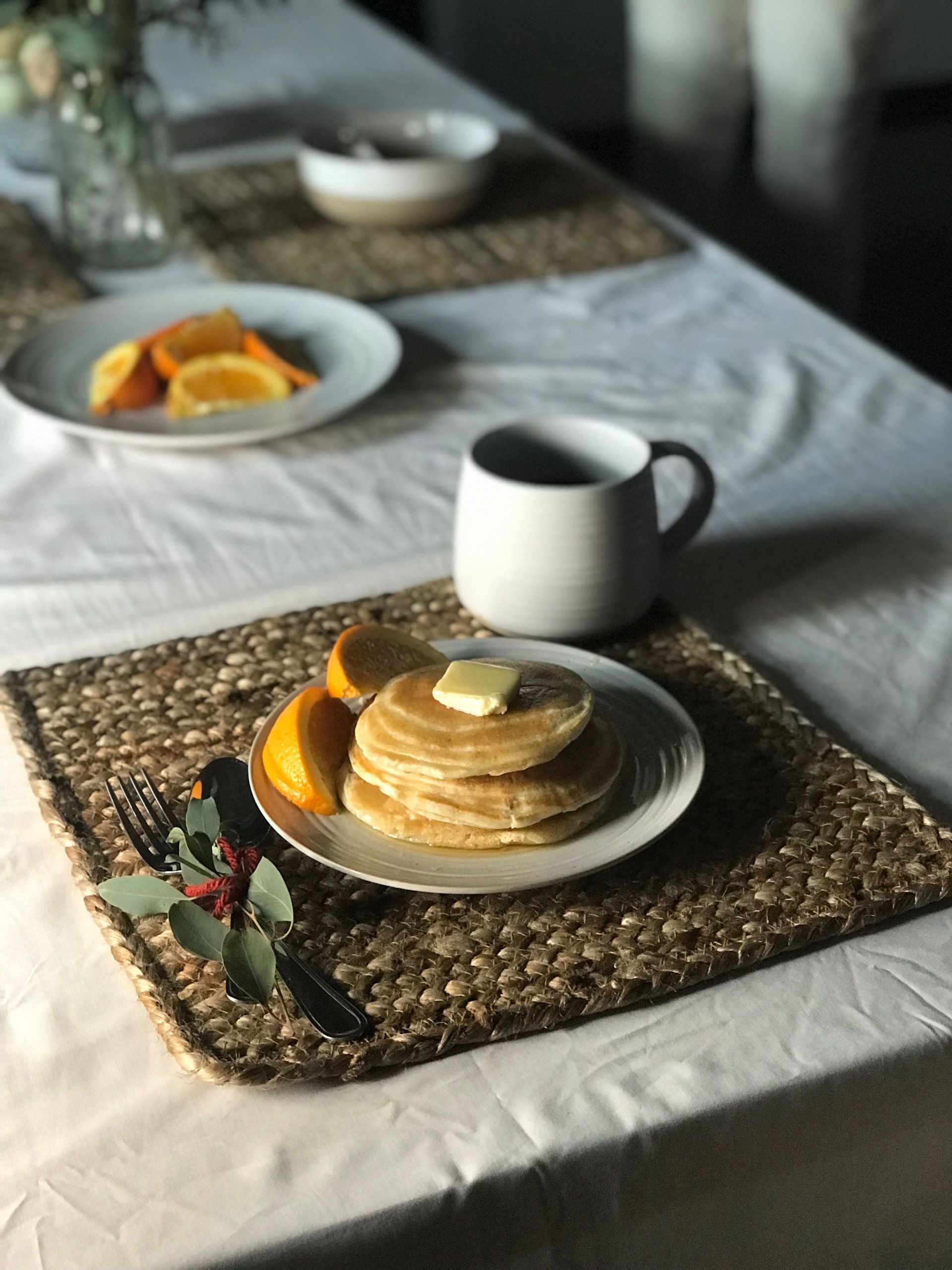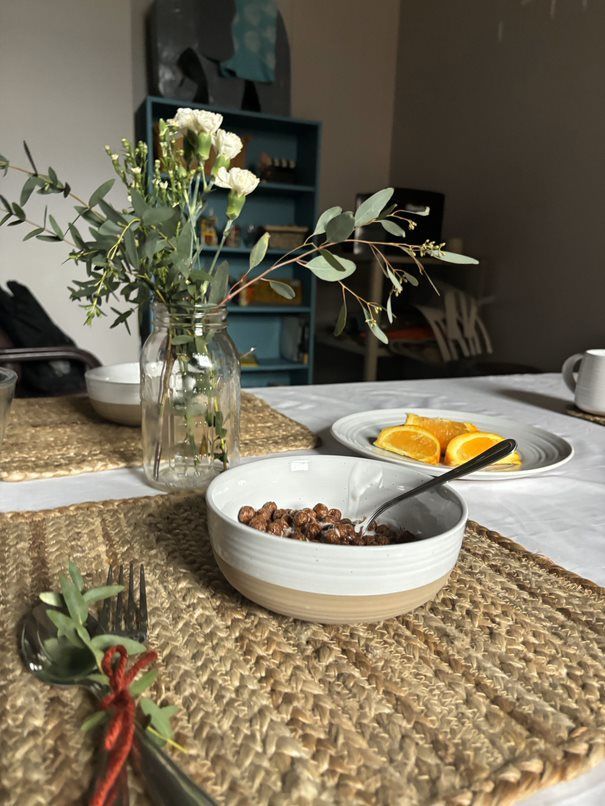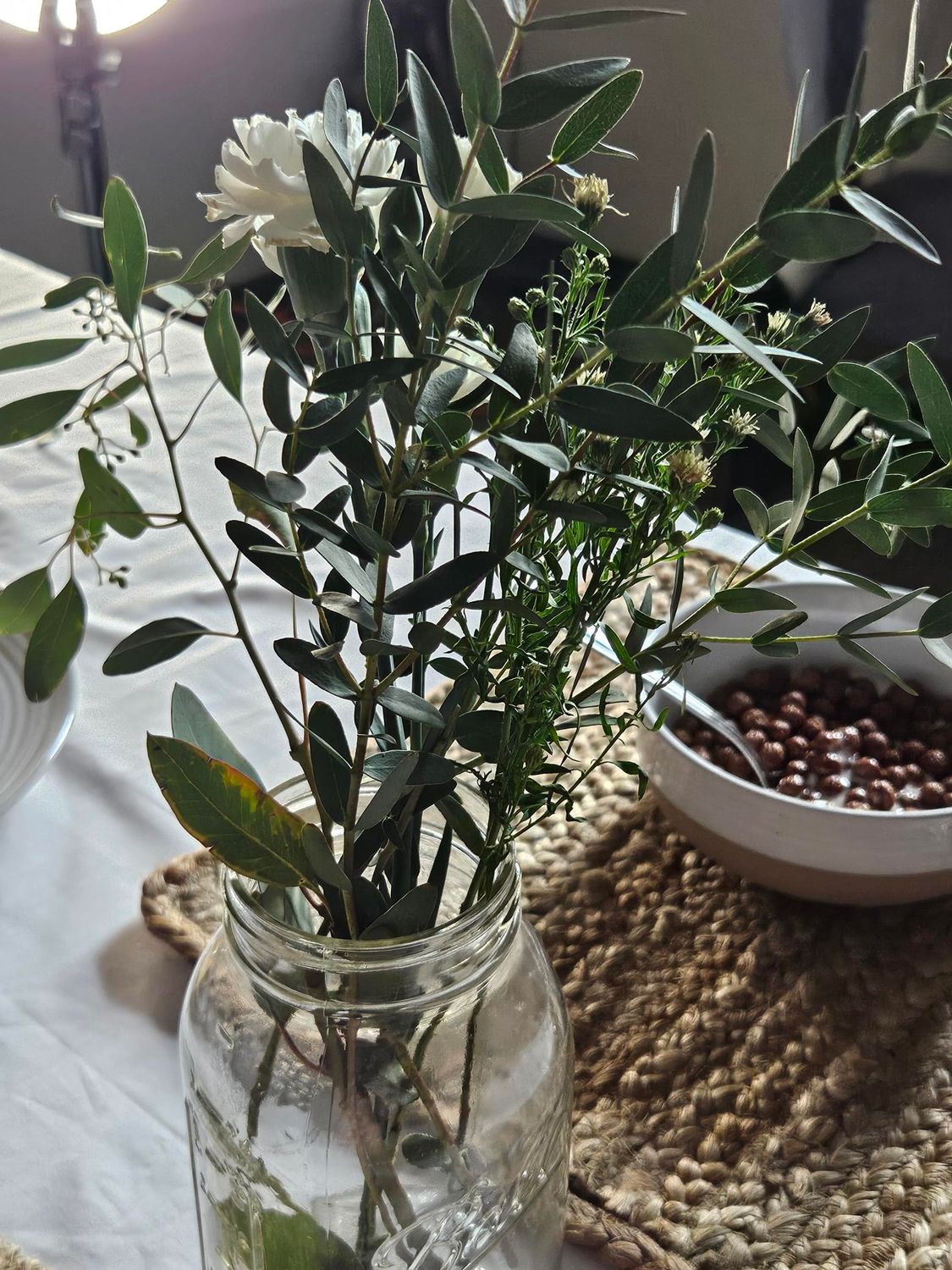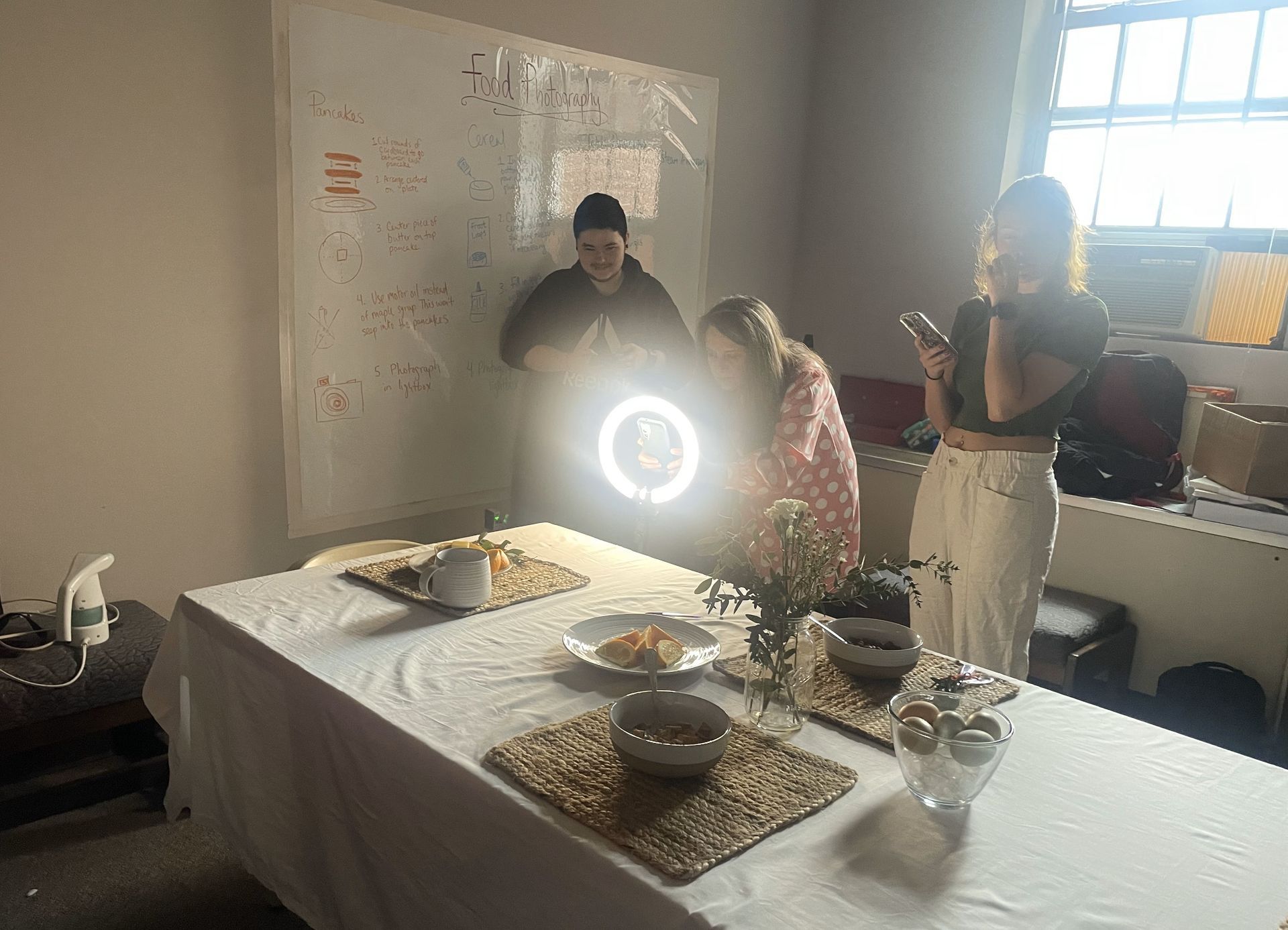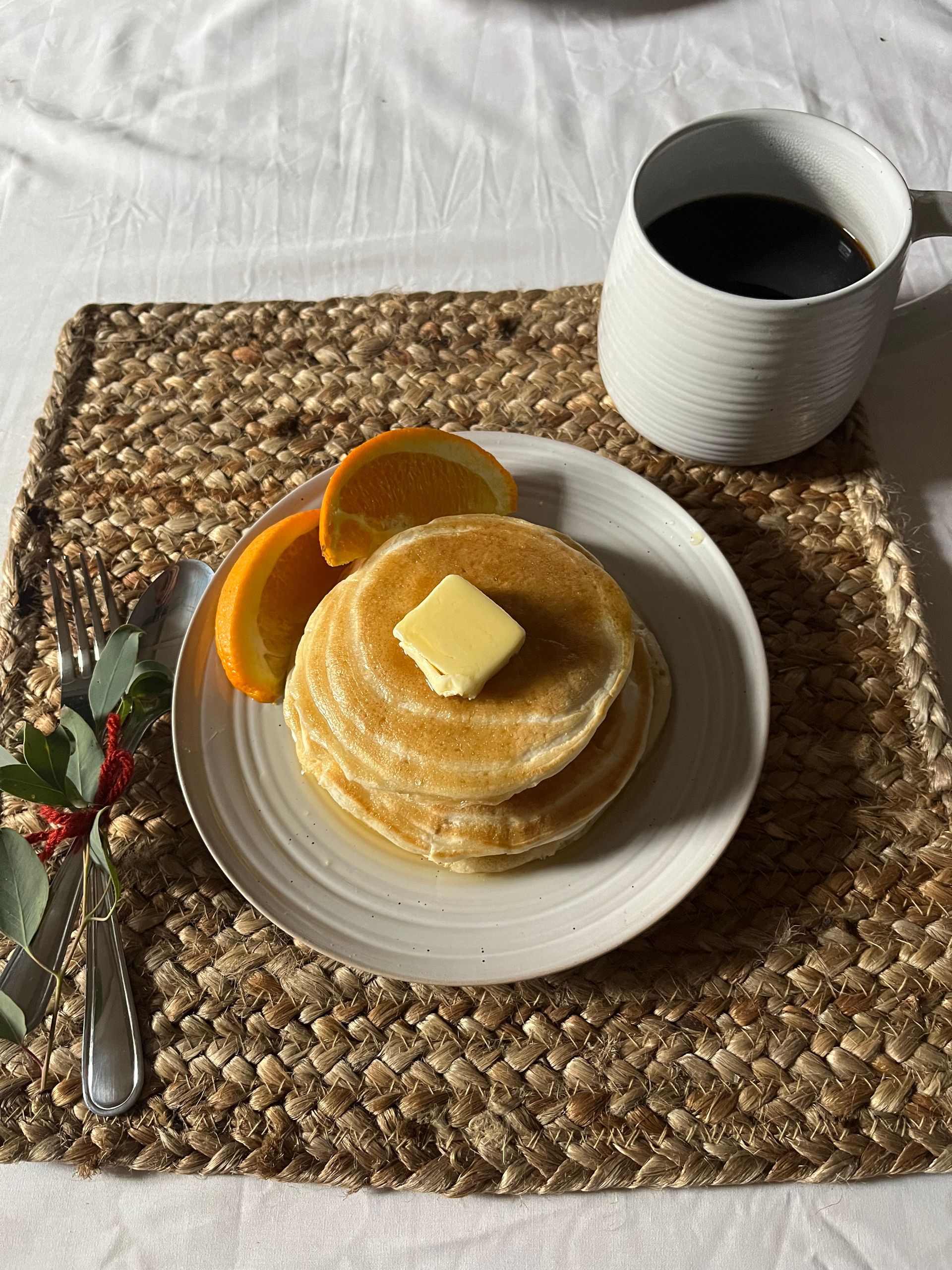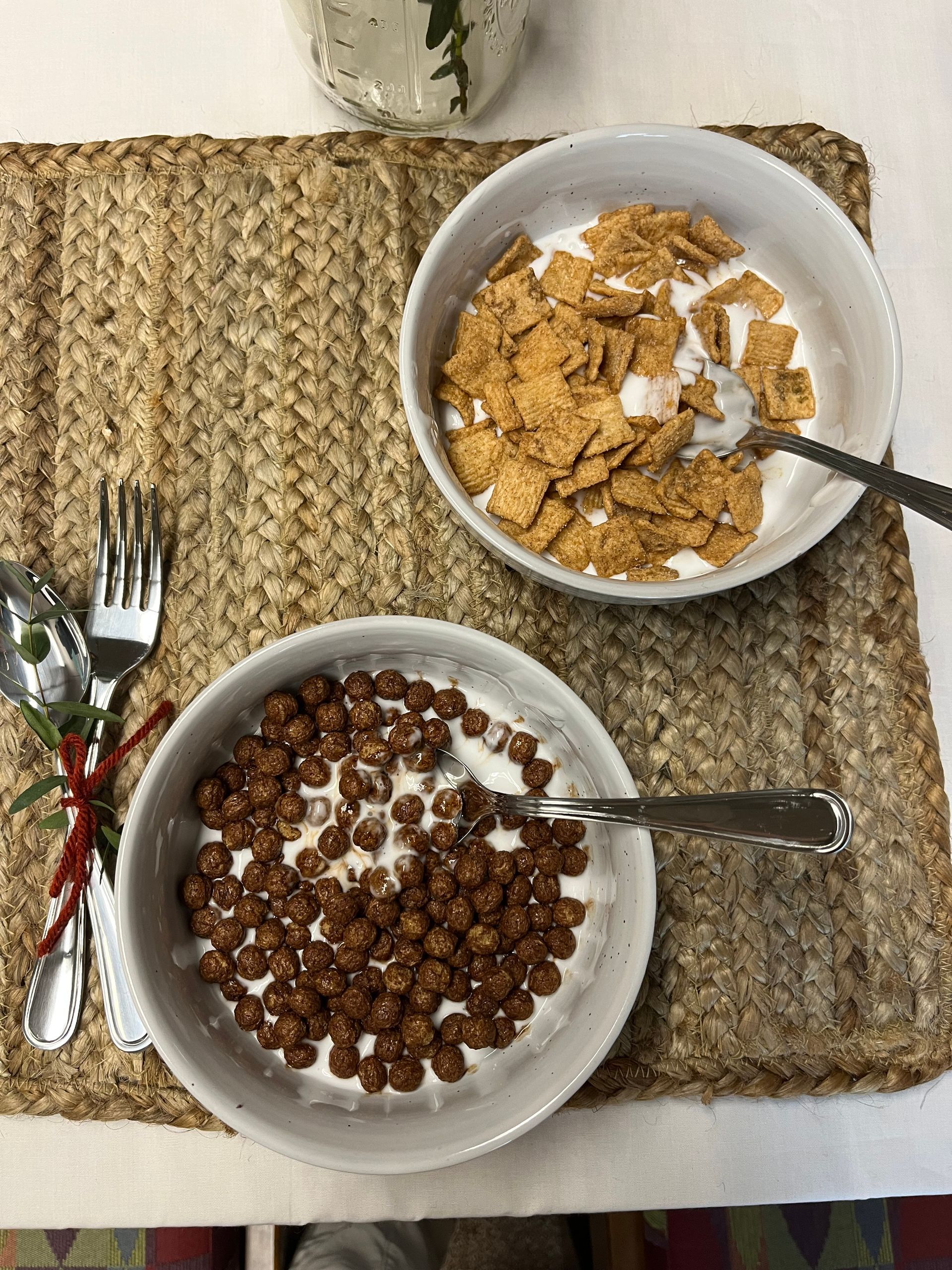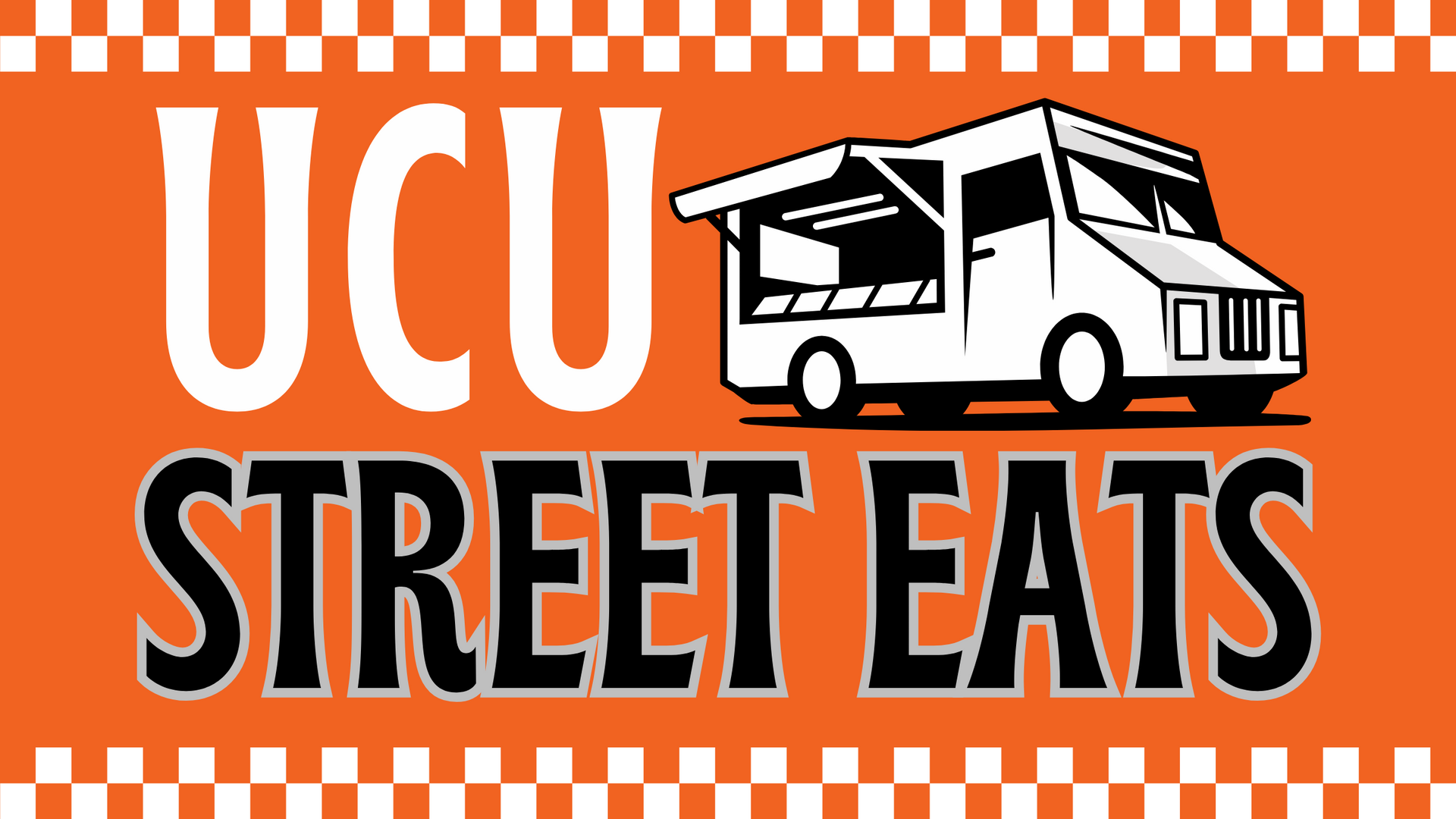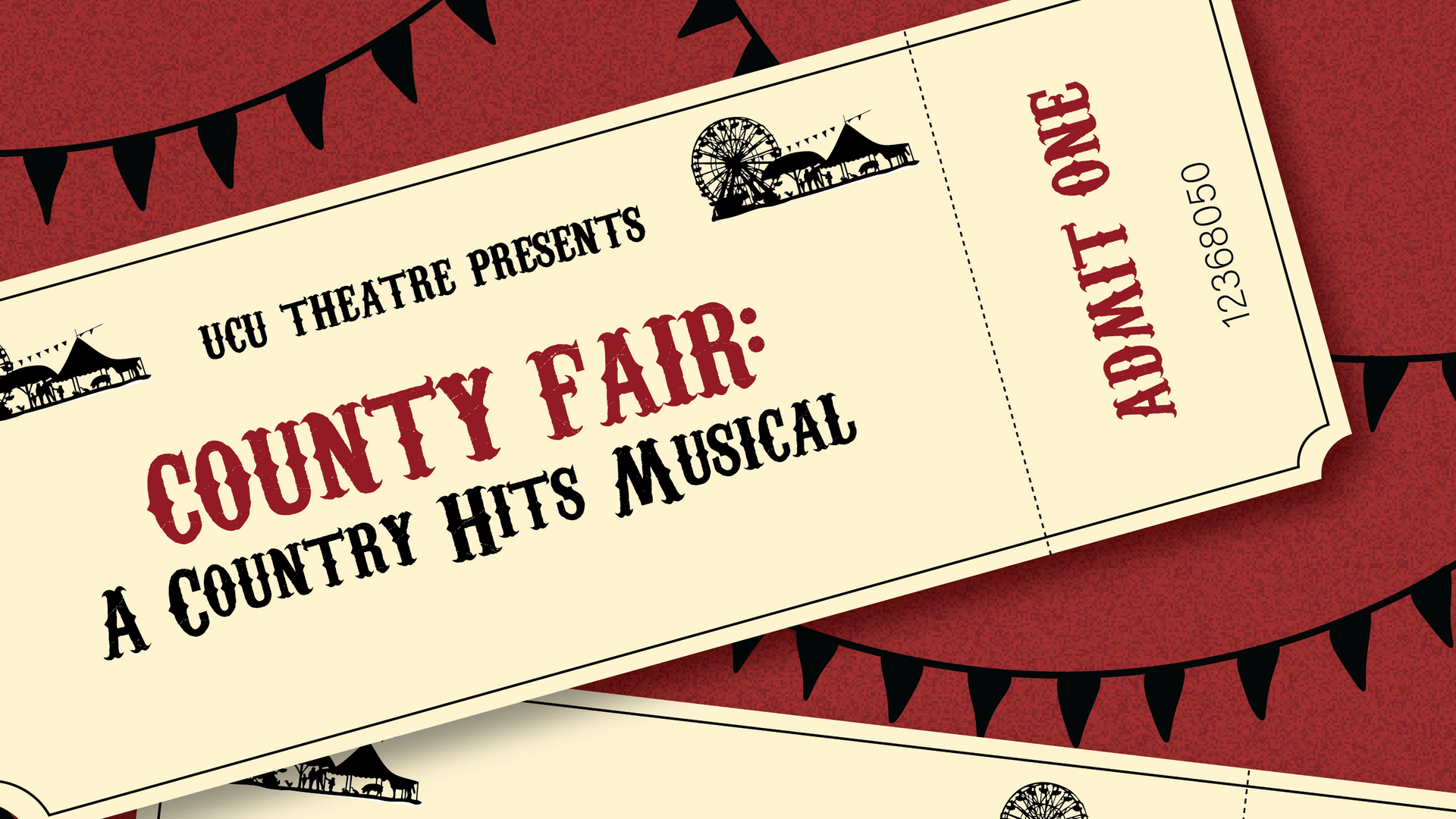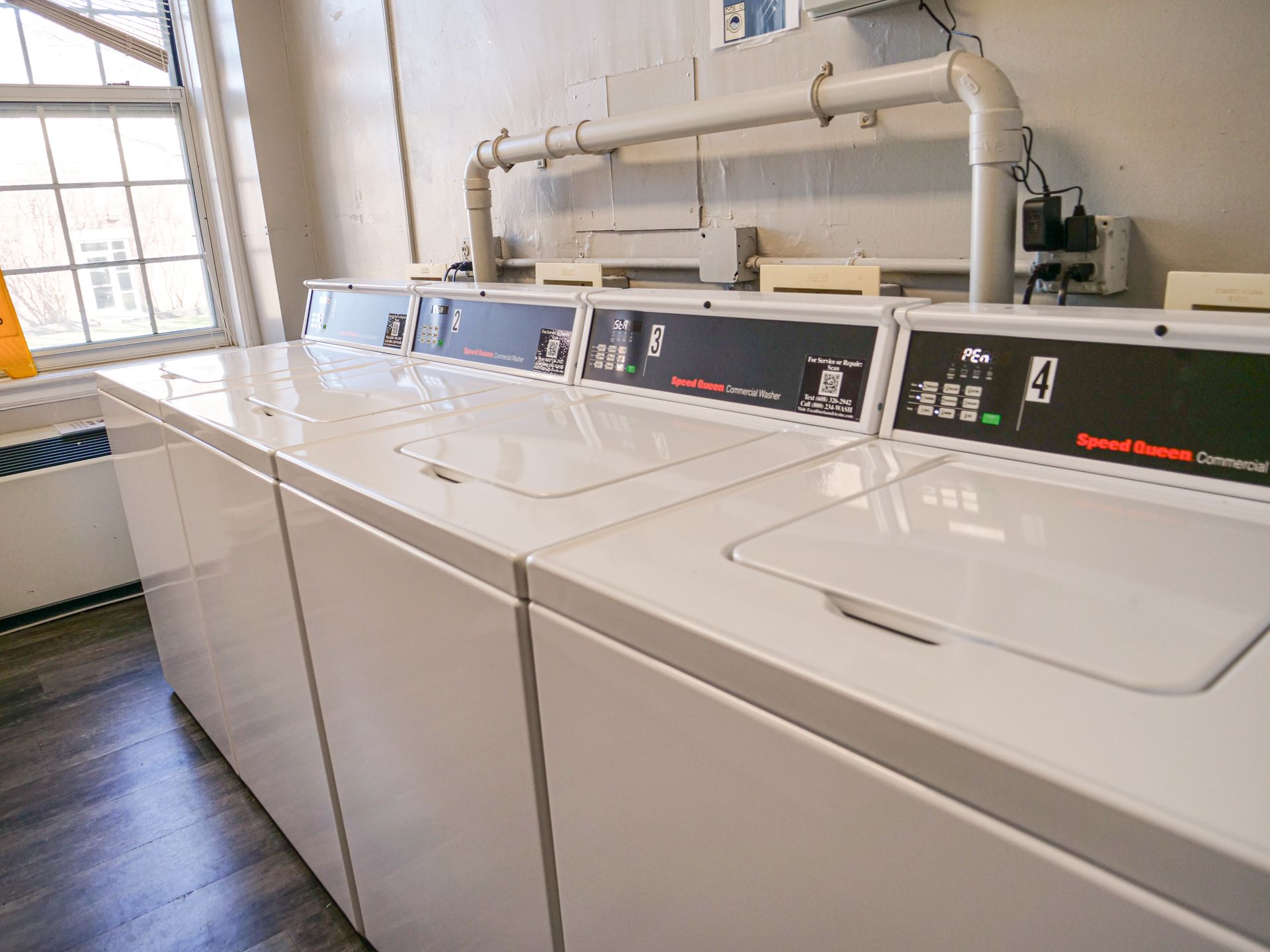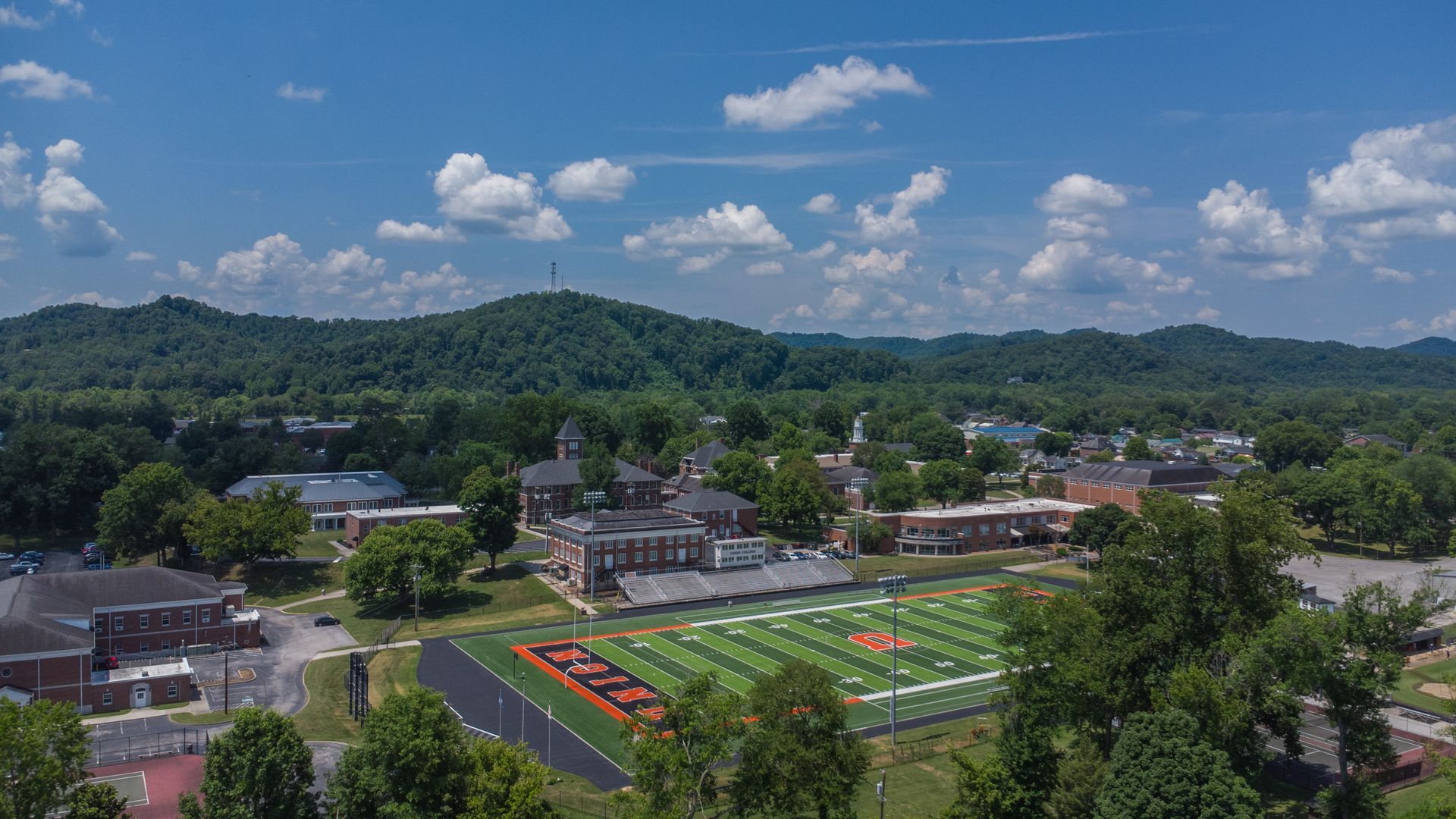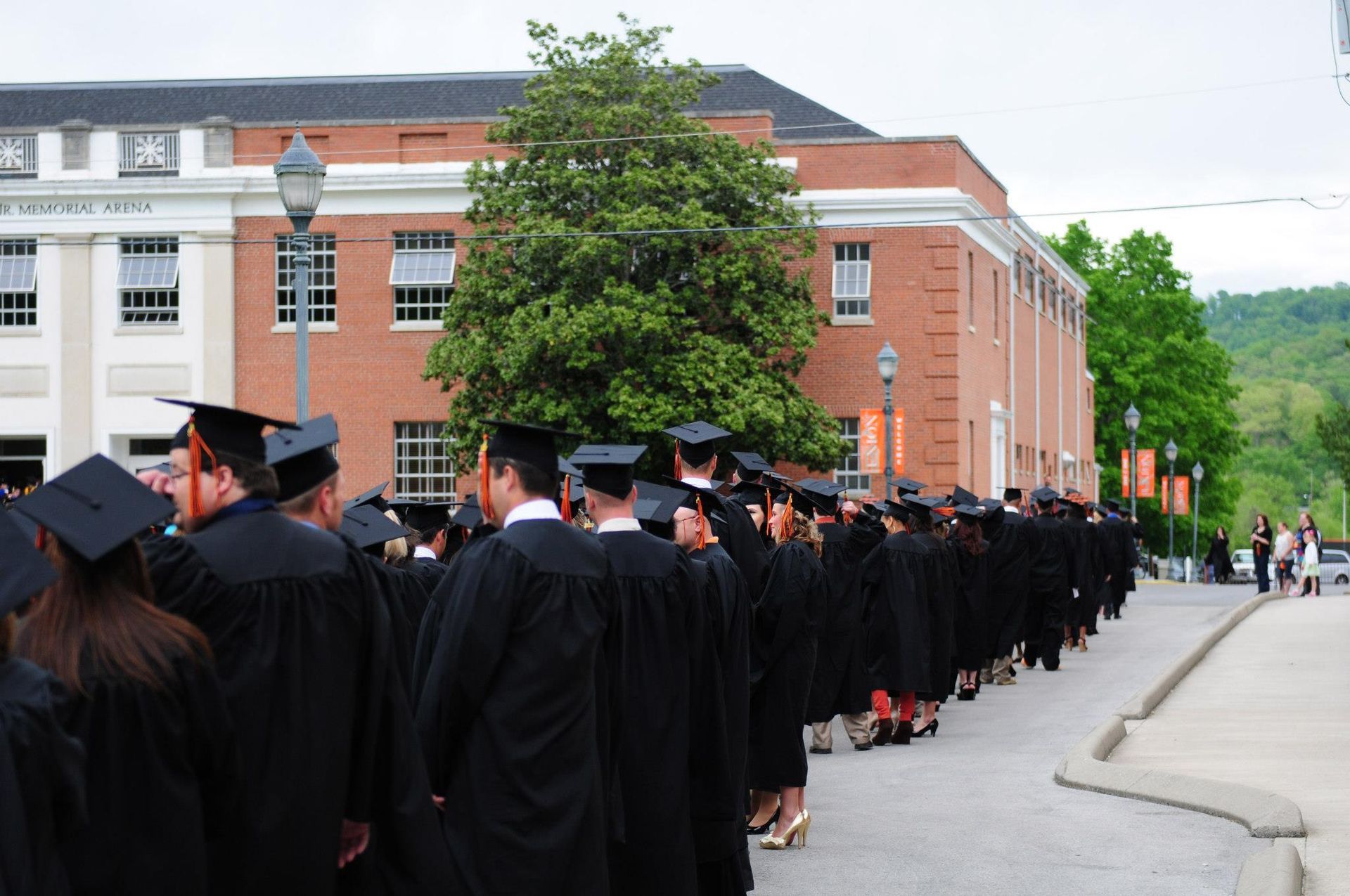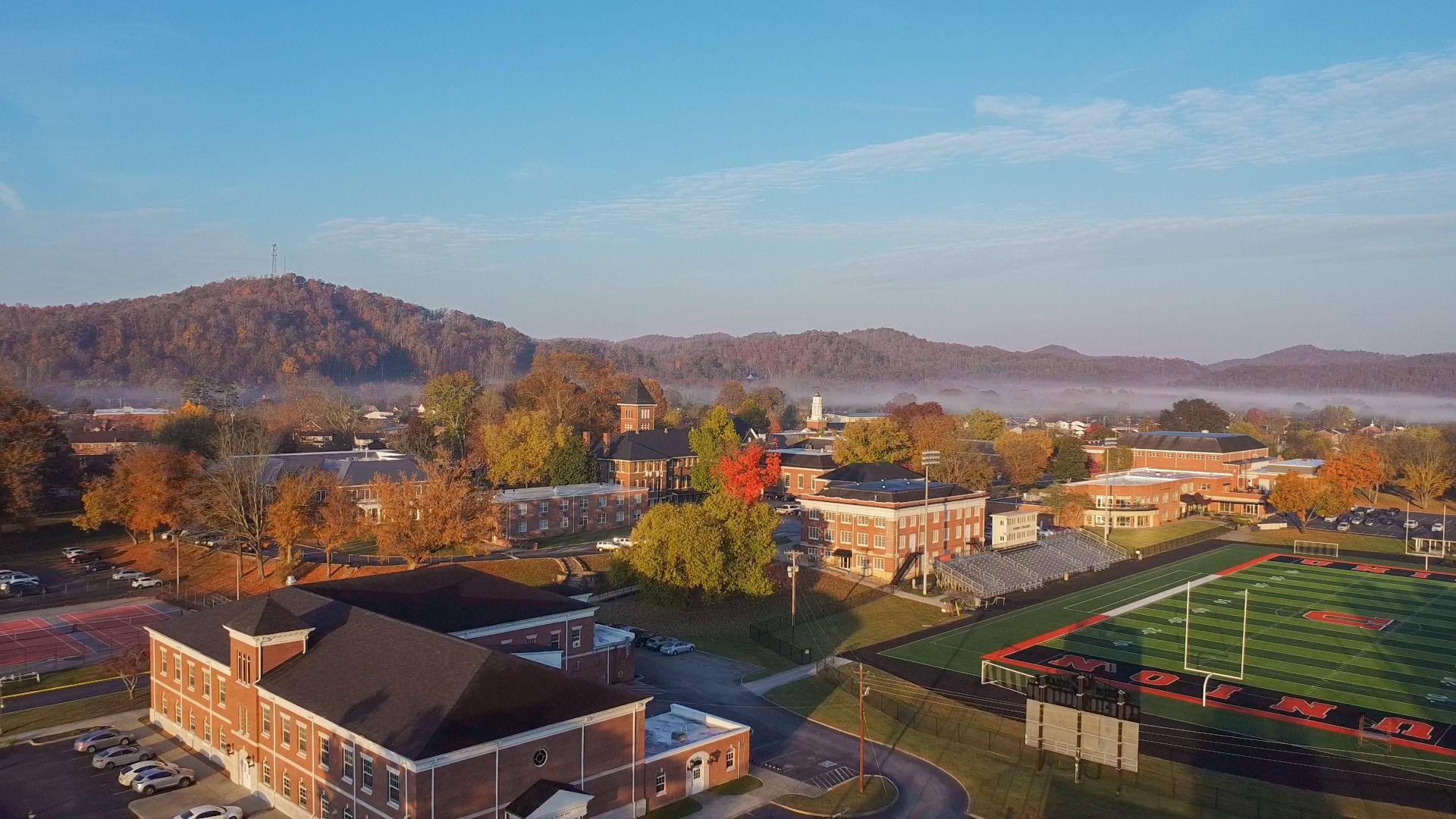AV头等舱’s Introduction to Photography class had a hands-on session this Tuesday. Students learned how to compose, light, and frame photos for food photography. What appeared to be a delicious breakfast used some strange ingredients to capture the perfect shot.
With the rise of online food blogs, commercials, and visual advertisements, food photography is more popular than ever. However, as we all know, what you see isn’t always what you get. We are left to question, “how do photographers make their products look mouth-watering every time?” The answer to that is simple: illusion.
When students arrived to class Tuesday morning, they were split into teams of food and set stylists. Some prepared the table, complete with placemats. silverware, flowers, and a bowl of fresh eggs. Creases were ironed, settings were lined up, and greenery was positioned just right. The other groups were tasked with arranging the pancakes and bowls of cereal.
A problem food photographers run into with taking pictures of pancakes is the syrup seeping in and disappearing. To resolve this, they will swap out the maple syrup for motor oil. This has the same brown color but sits on the surface longer than syrup does. Students placed a pat of butter on the center of the stack and carefully poured the oil over top. Another alteration made to the pancakes was placing cardboard between each level to give some added height. The finished product was a glossy and fluffy stack of pancakes that, while inedible, looked good enough to eat!
[PHOTO: by Rachel Williams]
The cereal team prepared two different bowls for the table but made an interesting switch. Instead of milk, they used white school glue. The thickness and high opacity of glue gives a bright white appearance and keeps the cereal from getting soggy. The untrained eye might not even know the difference, but for the photographer who must take their time capturing the right shots, glue is easier to work with.
With the table and food items ready, students began taking pictures of the set. All assignments and activities in the class are completed on smartphones, and techniques specific to these devices were integrated into this project. Students learned how to adjust the depth of field in their photos to blur the background of the classroom. They also used warm lighting to make the food appear more appetizing. Everyone had a chance to take pictures from multiple angles, highlighting the different elements featured on the table.
At the end of class, everyone cleaned up the shoot, sat around the table, and enjoyed a bowl of cereal—with real milk, of course. As tempting as the pancakes looked, they were off-limits.

